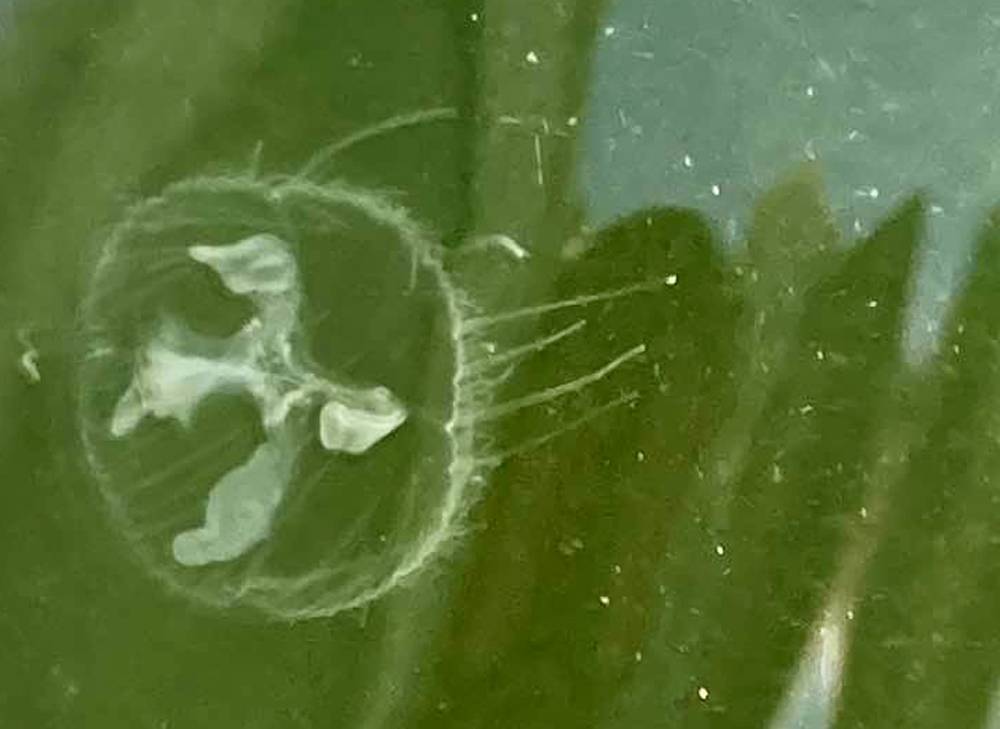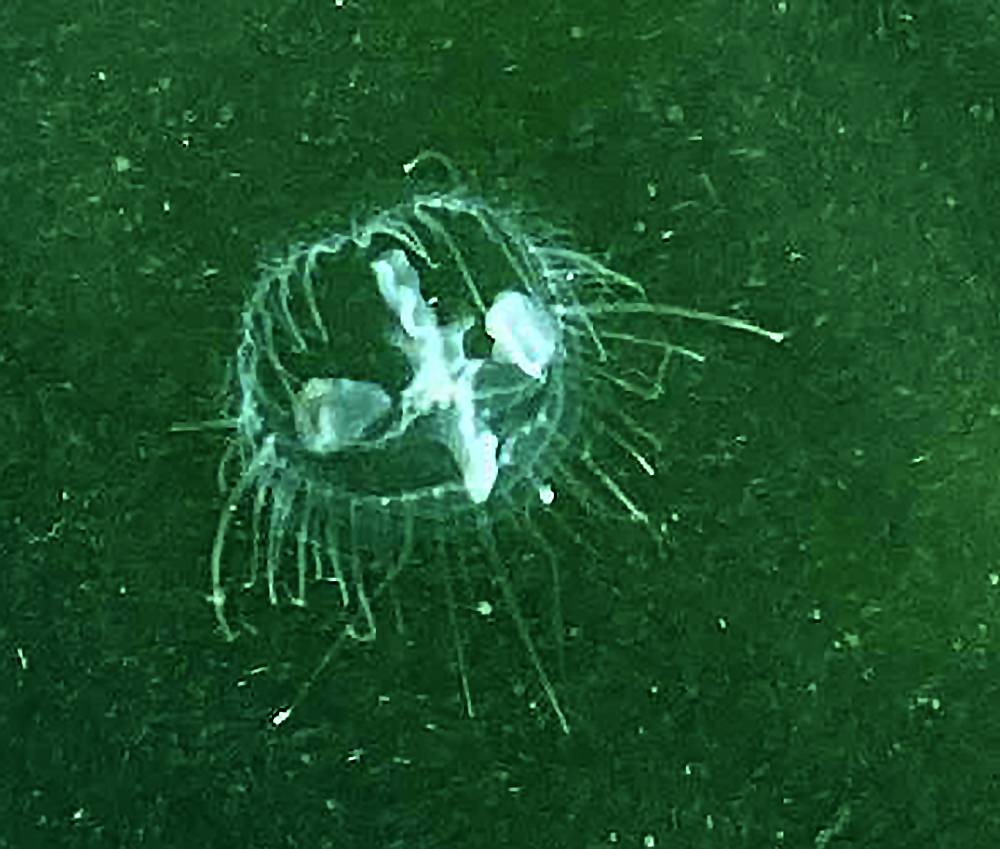Freshwater Jellyfish in Crooked Lake: A Delicate Ecosystem Indicator in our Watershed
Monday, September 25, 2023
When Crooked Lake resident Tim Hartman’s nephews gazed into the depths of the water just off his pier at the top of the Upper Tippecanoe River Watershed in Noble & Whitley County, some strange, transparent, wiggly creatures moving through the water caught their attention — and they quickly went running to shore looking for answers.
“My nephews went swimming and saw them first,” Hartman said. “They called me down to the pier to make sure they weren’t seeing things!”
They were, in fact, seeing things…things that were very good news for Crooked Lake and the rest of the watershed — a freshwater jellyfish!
“I have read articles in the past few years that freshwater jellyfish have been seen in a couple lakes in northern Indiana,” Hartman said. The next day, he took off on his kayak to look for more, wondering just how widely distributed they were in the lake. “I saw them throughout the lake, by the hundreds,” he added, “mainly in the open water along the southern shore.”
A docile creature that poses no threat to humans, the freshwater jellyfish (Craspedacusta sowerbii) are a remarkable, but often overlooked aspect of aquatic ecosystems. They’re much smaller than their saltwater counterparts and certainly more likely to bring a smile to a scientist’s face because of what they represent – clean water. In Hartman’s case, he said they were various sizes ranging from about the size of a dime to the size of a quarter.
“These translucent, gelatinous creatures have been spotted in various freshwater bodies around the world, and their presence can be seen as a positive sign for water quality,” said Lyn Crighton, executive director of The Watershed Foundation, an organization taking action to preserve and protect the waters of the Upper Tippecanoe River Watershed. “Finding these in our local lakes is very good news and it indicates that the steps we are taking, the dollars we are investing in conservation projects, are improving the health of our lakes.”
Indeed, according to Crighton, freshwater jellyfish are very sensitive to changes within their environment.
“They require stable and well-balanced water conditions to thrive,” Crighton adds. “The presence of these delicate creatures suggests that the water they inhabit is not only suitable for their survival, but also indicates that it has maintained stability over an extended period. A well-established and consistent ecosystem is often indicative of good water quality.”

While Crooked Lake residents and those at TWF might be eager to jump for joy at this news, it’s a delicate situation.
“Freshwater jellyfish are known to be highly intolerant of pollution,” warned Crighton. “They are filter feeders, mainly subsisting on zooplankton, algae and small aquatic invertebrates. In polluted water bodies, these food sources may be scarce or contaminated, making it difficult for jellyfish to find suitable nourishment. Small changes in the water could spell trouble for the freshwater jellyfish. It’s important to continue doing the work we do and for residents to remain committed to protecting their lake from sources of pollution.”
Fluctuating nutrient levels also pose a risk for the freshwater jellyfish. Excessive nutrients, particularly nitrogen and phosphorus from agricultural runoff or wastewater discharge, can trigger algal blooms. These blooms can deplete oxygen levels in the water, leading to hypoxic conditions harmful to many aquatic organisms. The presence of freshwater jellyfish is an indirect indicator that nutrient levels are within a reasonable range, preventing algal blooms and maintaining essential oxygen levels.
For now, though, Crighton is optimistic. “The fact that they are present in an area suggests that pollutants and contaminants are minimal, promoting a healthier and more pristine aquatic environment,” she said.
Fortunately, freshwater jellyfish have a few natural predators, such as certain species of fish and aquatic insects. The presence of these jellyfish suggests that their natural predators are also present in the ecosystem, contributing to the overall ecological balance.
“This balance is a sign of a well-functioning ecosystem, which is also often associated with good water quality,” Crighton continued. “The presence of freshwater jellyfish can be seen as an indicator of overall ecosystem health. A thriving population of these creatures is a testament to the health and vitality of an aquatic ecosystem, which in turn can benefit various other species that depend on this environment for their survival. The interconnectedness of species within an ecosystem means that the well-being of one organism, like the freshwater jellyfish, can be reflective of the broader ecological conditions and overall water quality in Crooked Lake.

“That means that the water quality might be stellar in Crooked Lake, but we know that as the water flows west and south, it continues to pick up pollutants and excessive bio nutrients,” Crighton said, “so, clearly, our work is far from finished. To me, though, the presence of the jellyfish are a sign that we are making progress and what we have is certainly worthy of our time and protection.” “The discovery of freshwater jellyfish in Crooked Lake should be viewed as a positive sign for water quality and a reminder of the importance of preserving and protecting our freshwater ecosystems, our lakes and our streams,” Crighton said.
Be a Hero for Healthy Lakes!
Our lakes need help. Our lakes need you. You can volunteer on clean water projects, take an action pledge, attend an event, donate funds – there are so many ways to make a difference! Will you join us?


